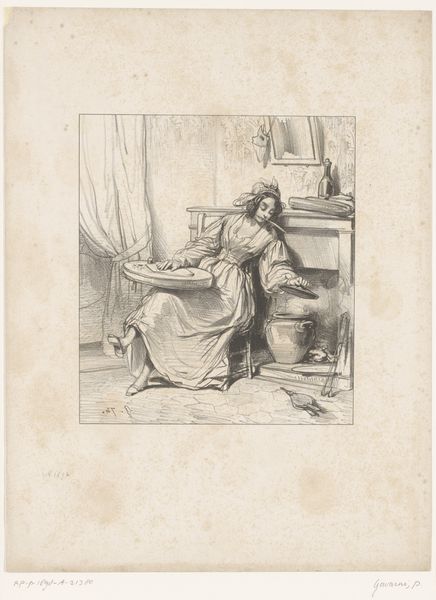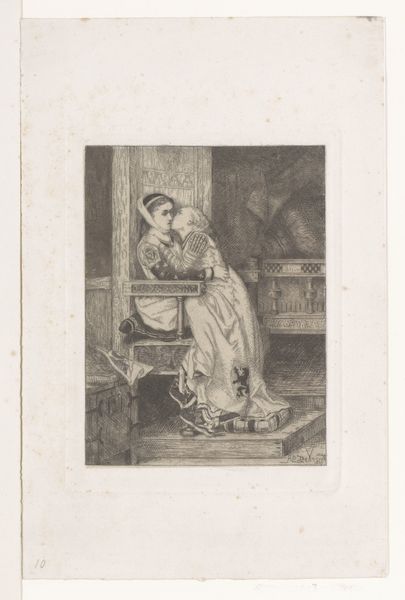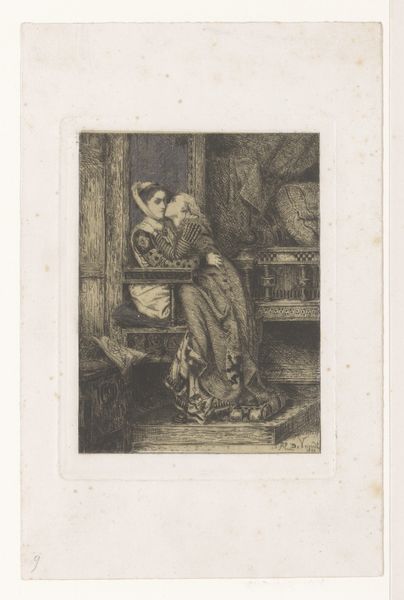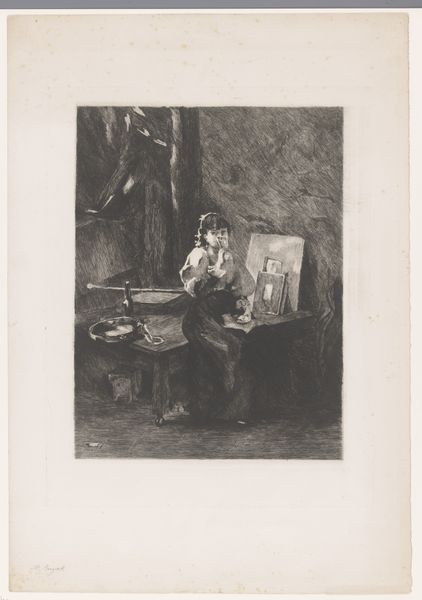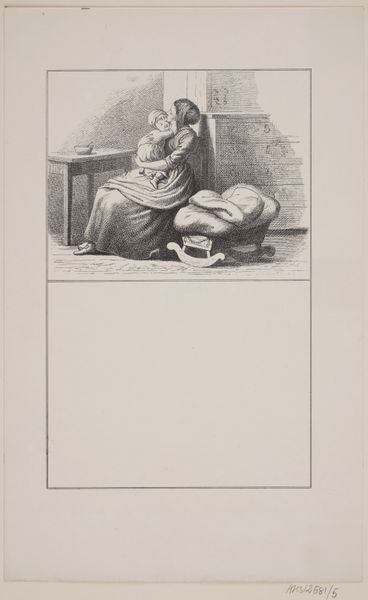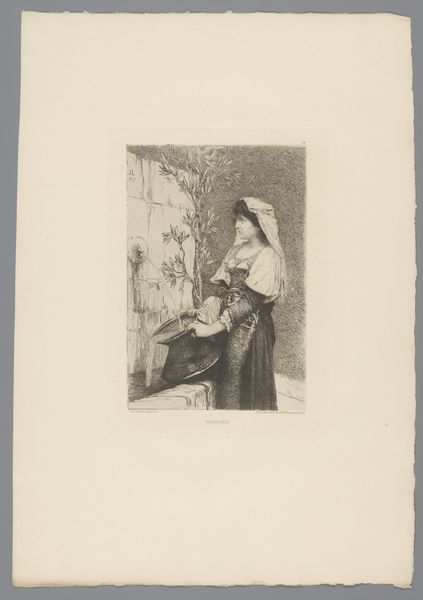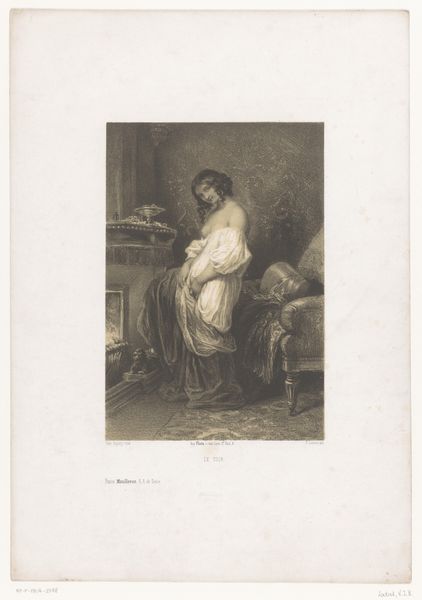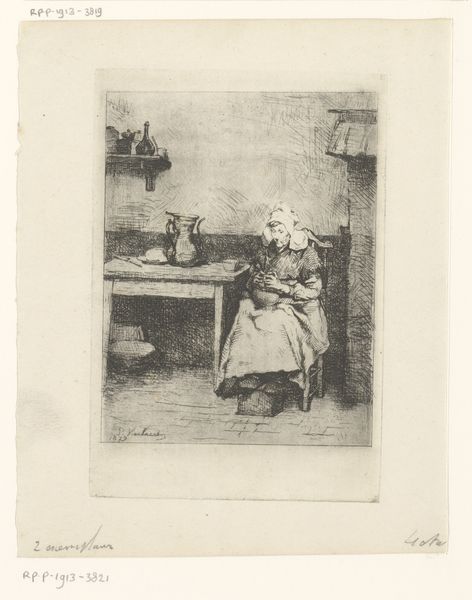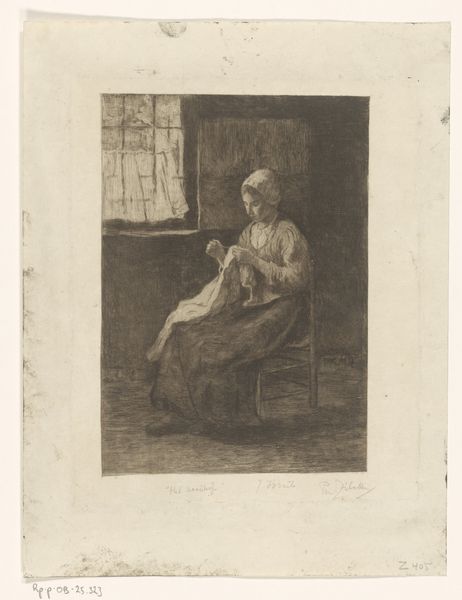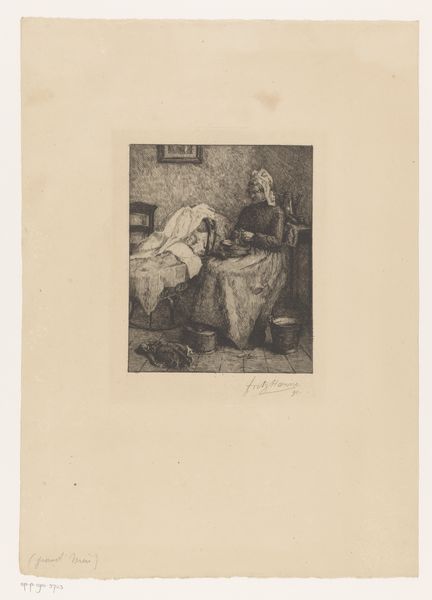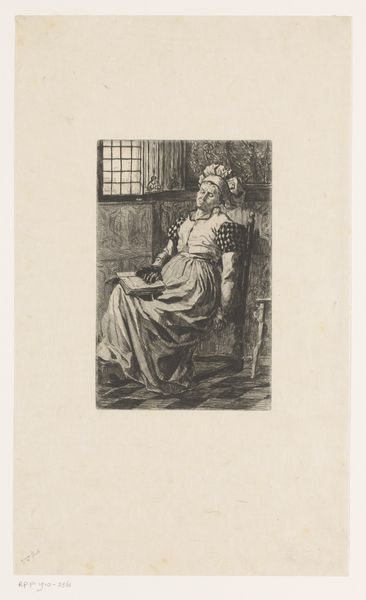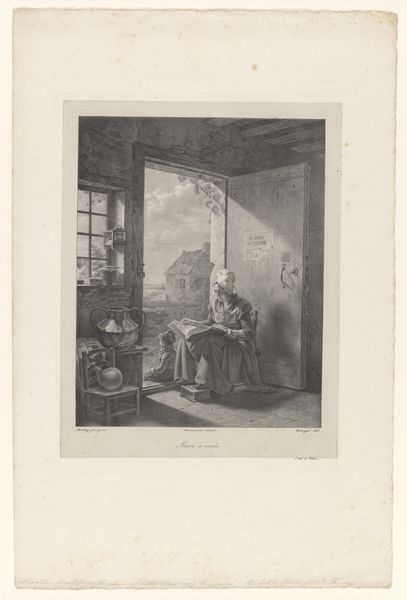
Dimensions: height 278 mm, width 197 mm
Copyright: Rijks Museum: Open Domain
Editor: Here we have Léopold Flameng’s "Young Mother with Baby," an intaglio print dating roughly from the mid-19th century. It feels so intimate and yet also very melancholic, given the dark tones. What's your interpretation of this piece? Curator: I see this etching as a window into 19th-century social dynamics, particularly regarding motherhood. Consider the rise of the bourgeoisie and its emphasis on domesticity and family. This image, though seemingly sentimental, could also subtly critique the restrictive roles imposed on women. How does the architectural setting, with its almost prison-like feel, inform your understanding of the mother's pose? Editor: That's fascinating. I hadn't really considered the setting as contributing to a sense of confinement, but now that you mention it, it's hard to ignore. Do you think Flameng was consciously making a feminist statement? Curator: Perhaps "feminist statement" is anachronistic. However, art often reflects and refracts societal pressures. Think about the limited opportunities for women outside the domestic sphere during this period. This image might be read as an exploration of the psychological impact of such constraints, where the joy of motherhood is subtly intertwined with a sense of enclosure. Notice how the baby is reaching up and outward, and how that is juxtaposed with the mother reclining. Editor: So, the image isn't just a tender portrayal of motherhood, but a complex commentary on gender and social expectations? Curator: Precisely. It invites us to examine the intersection of art, social history, and gender studies. Editor: I’m seeing it with new eyes now! Thanks! Curator: My pleasure! Always interrogate the layers beneath the surface.
Comments
No comments
Be the first to comment and join the conversation on the ultimate creative platform.
